PGAMA Mingle & Jingle 2018



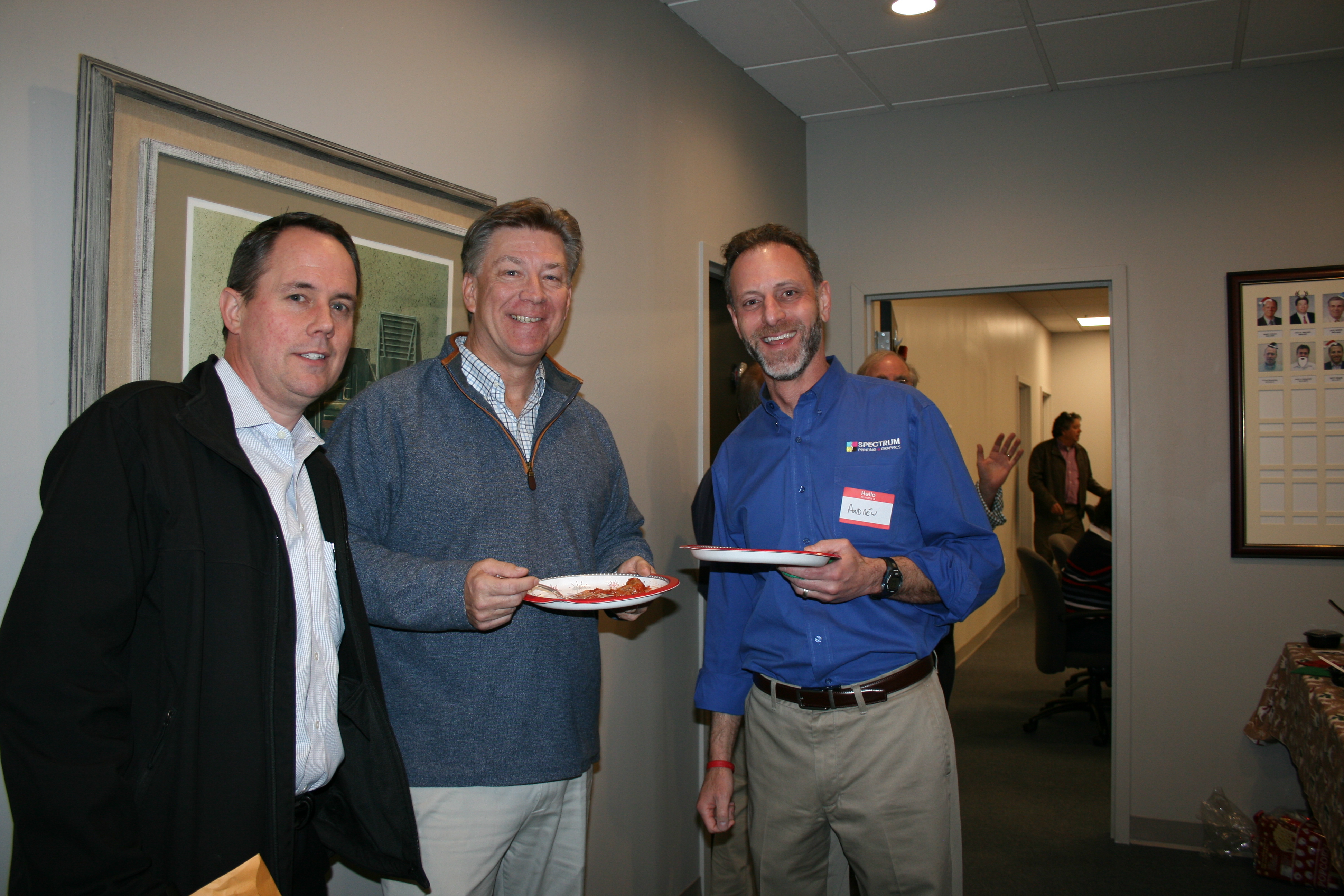

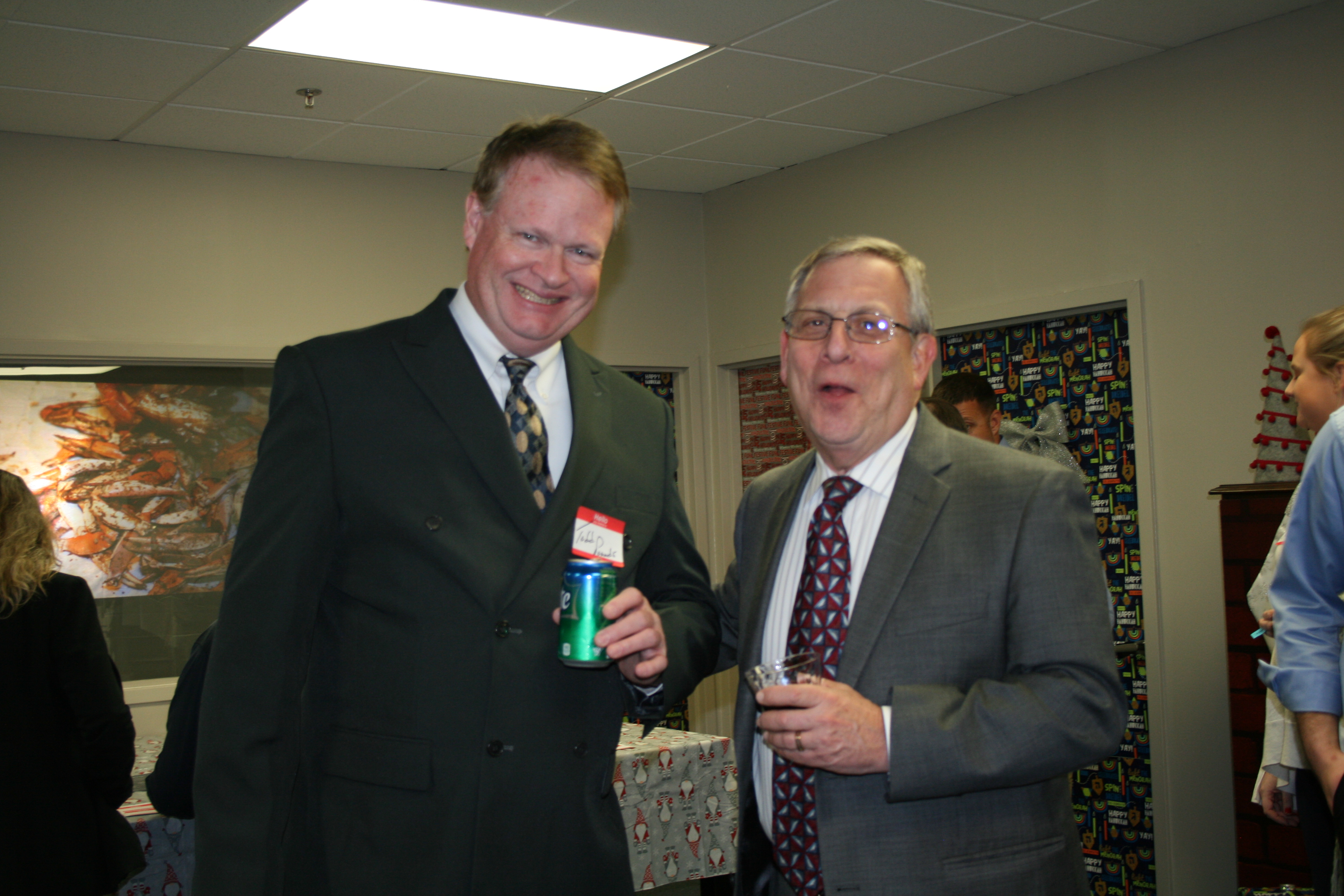



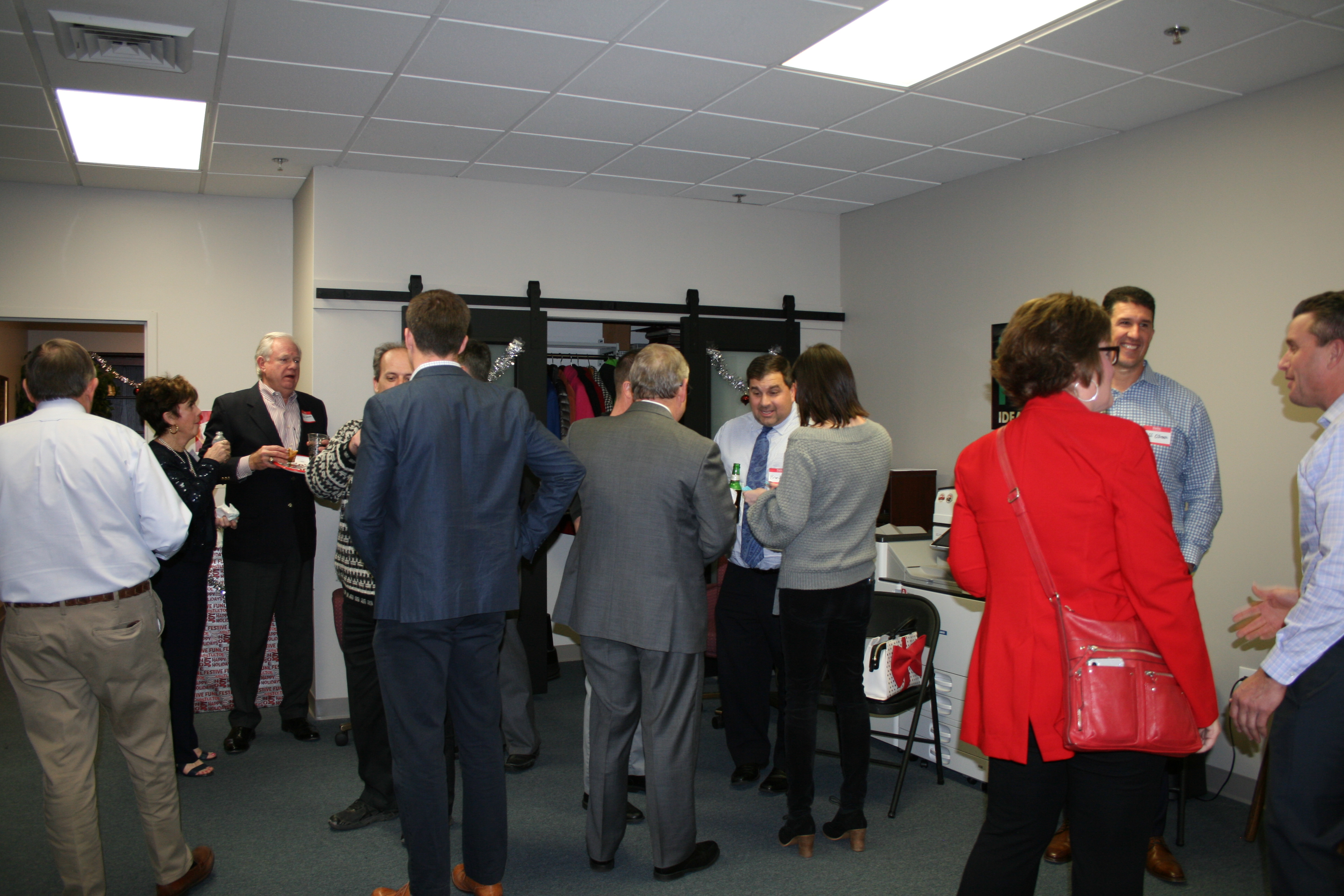
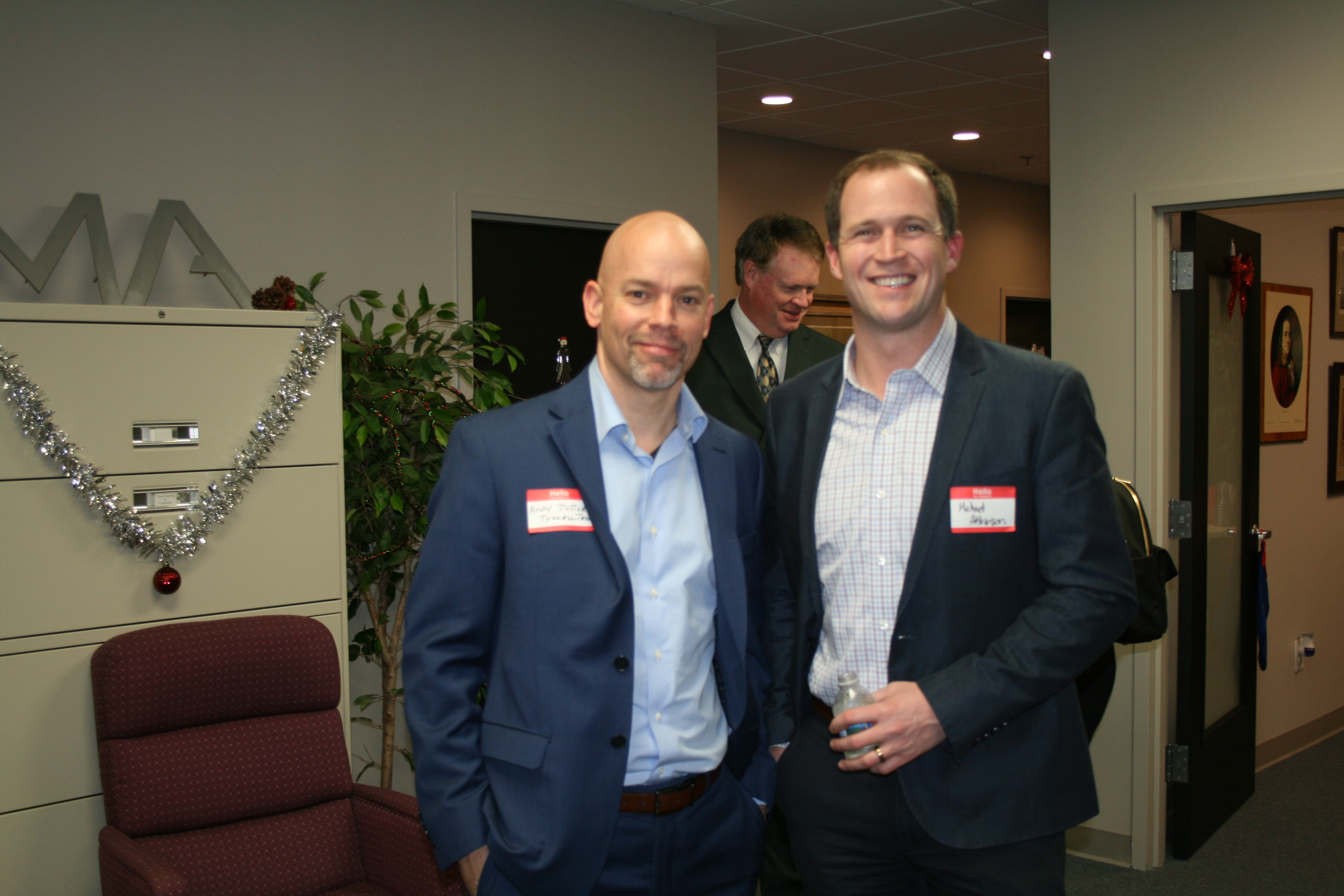

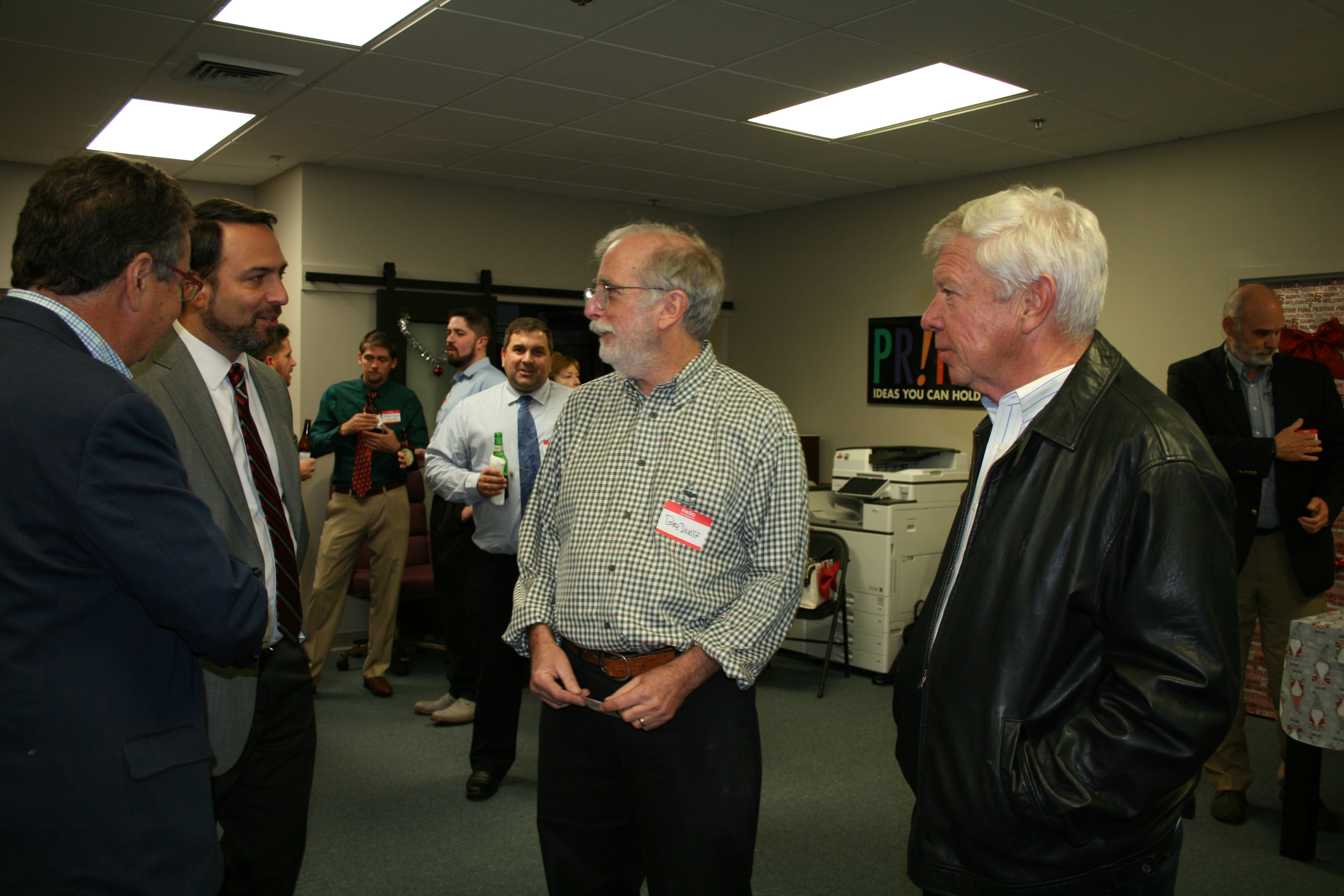
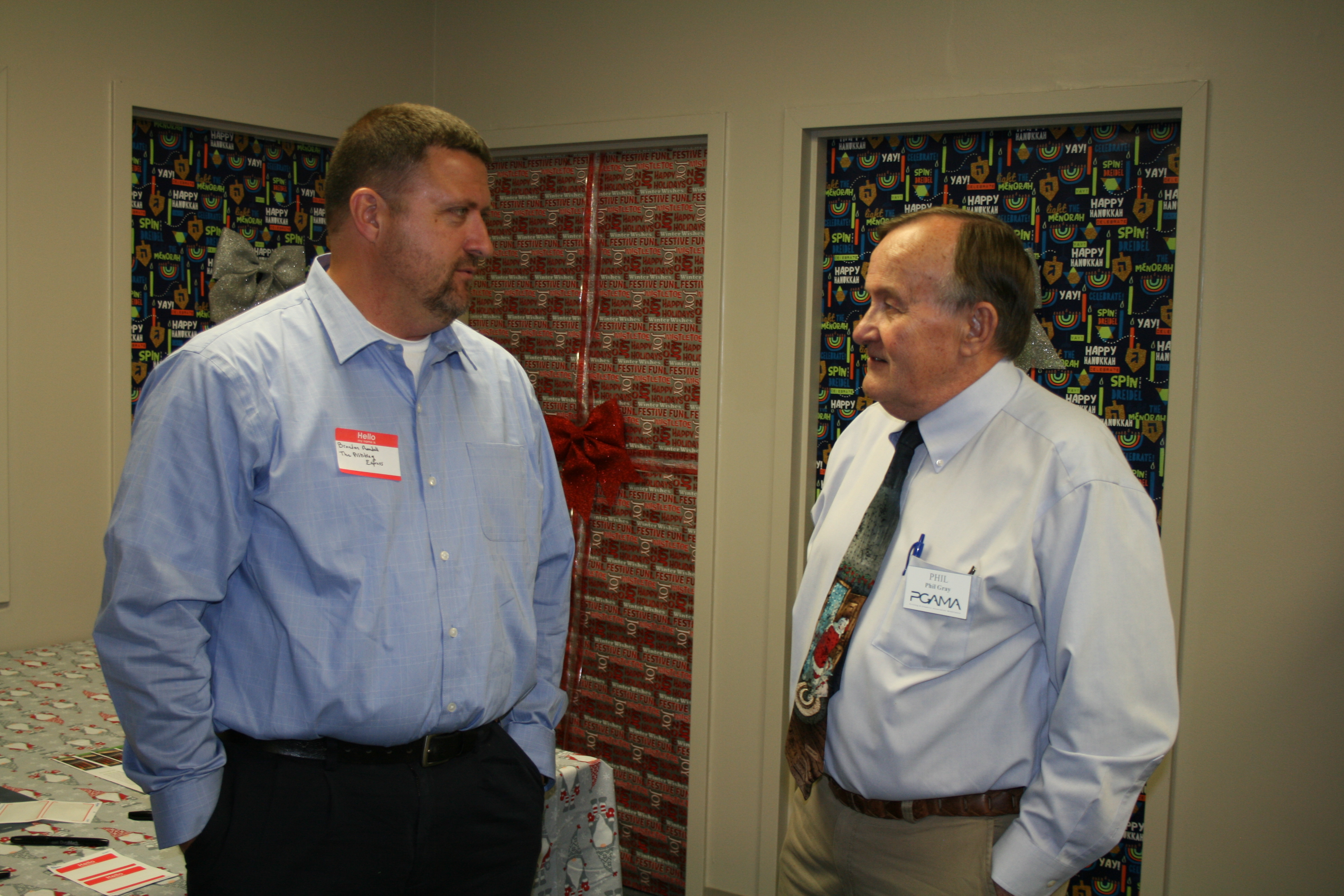

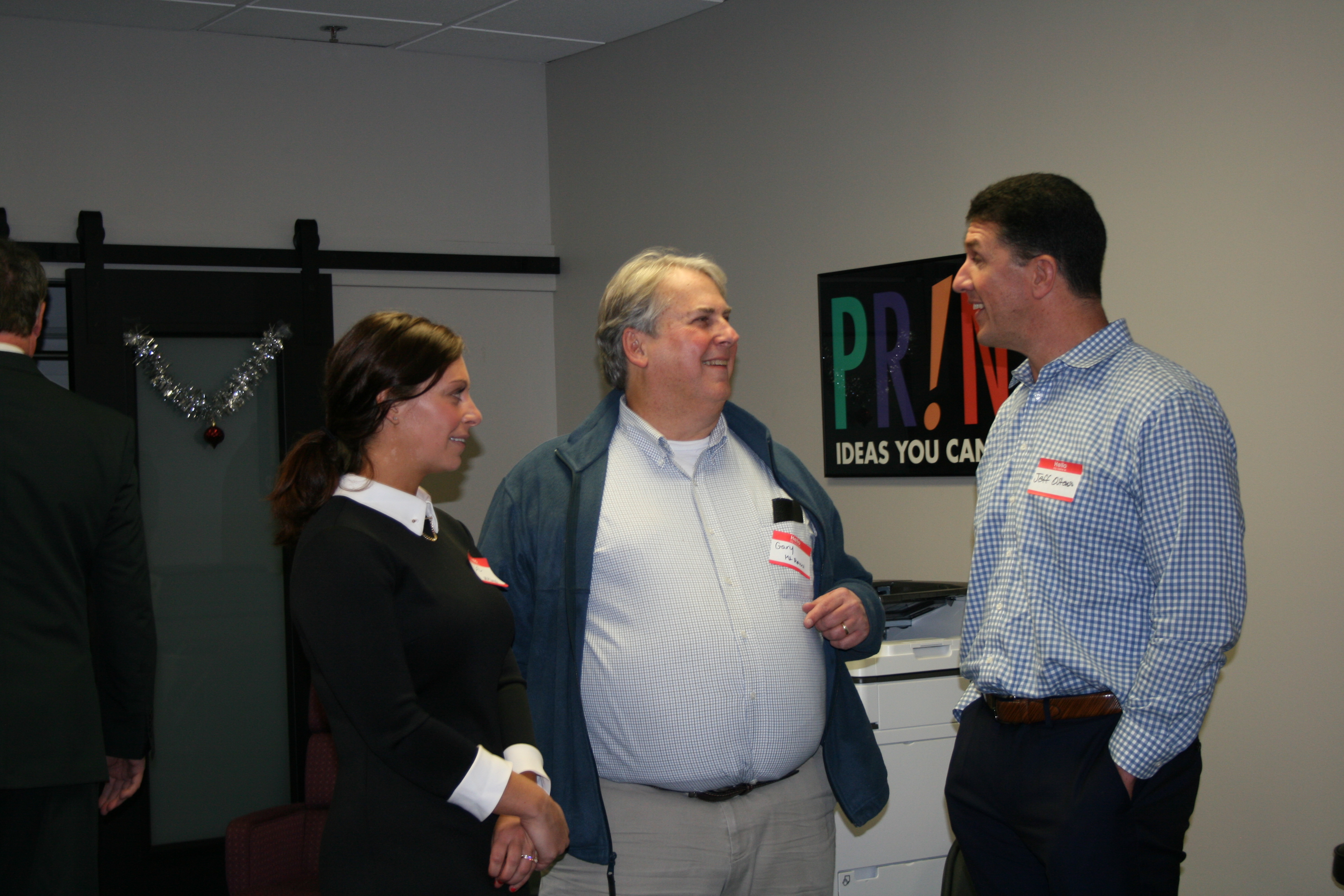


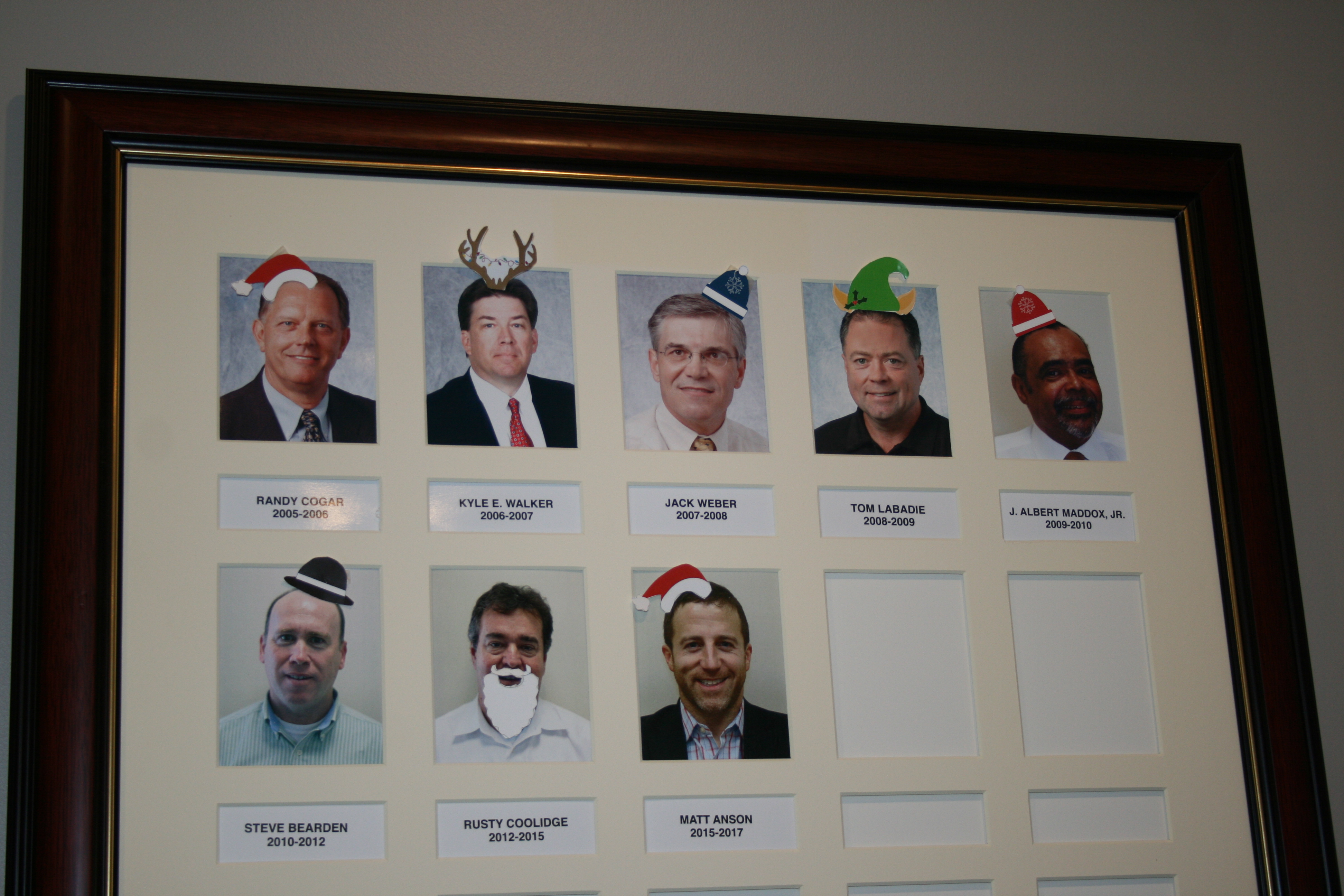

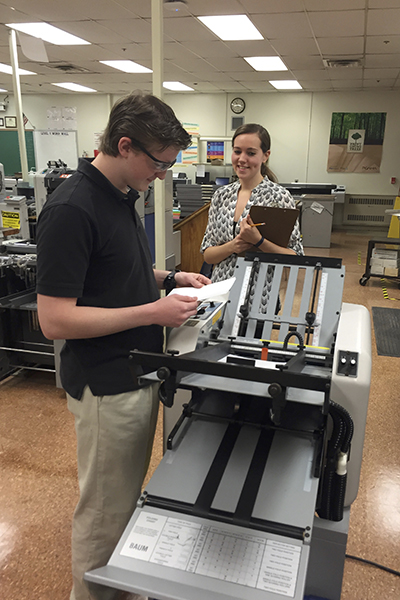 The SkillsUSA Graphic Communications (GC) Competition tests the student's skill and knowledge related to print production. The competition consists of 8 contests covering personal communications, job planning, page layout and preflight skills, printing press operation, digital printing, folding, and technical knowledge.
The SkillsUSA Graphic Communications (GC) Competition tests the student's skill and knowledge related to print production. The competition consists of 8 contests covering personal communications, job planning, page layout and preflight skills, printing press operation, digital printing, folding, and technical knowledge.
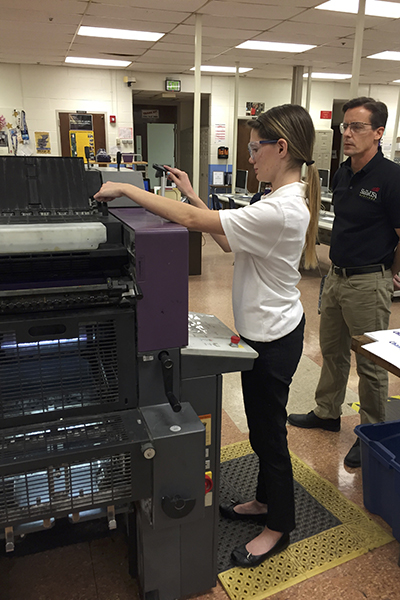 The GC competition journey begins at the regional level where students compete with peers in their region. Combined regionals are held at the Center of Applied Technology North (Anne Arundell County) in January and February. The top three scorers from each region earn a chance to compete at the State competition. The regional competitions are a smaller version of the State competition. All regional finalists and their parents are invited to attend the Printing & Graphics Association MidAtlantic's (PGAMA) Excellence in Print Awards Banquet in March as guests of PGAMA.
The GC competition journey begins at the regional level where students compete with peers in their region. Combined regionals are held at the Center of Applied Technology North (Anne Arundell County) in January and February. The top three scorers from each region earn a chance to compete at the State competition. The regional competitions are a smaller version of the State competition. All regional finalists and their parents are invited to attend the Printing & Graphics Association MidAtlantic's (PGAMA) Excellence in Print Awards Banquet in March as guests of PGAMA.
 The State GC competition is held in April at Printing Specialist Corporation located in Glen Burnie. The State competition includes more difficult versions of all of the contests held at regionals plus several others. The top three contestants receive prizes (in the past Apple iPads, iPods Touches, and iPod Nanos) with the winner earning the chance to represent the State at the National GC Competition.
The State GC competition is held in April at Printing Specialist Corporation located in Glen Burnie. The State competition includes more difficult versions of all of the contests held at regionals plus several others. The top three contestants receive prizes (in the past Apple iPads, iPods Touches, and iPod Nanos) with the winner earning the chance to represent the State at the National GC Competition.
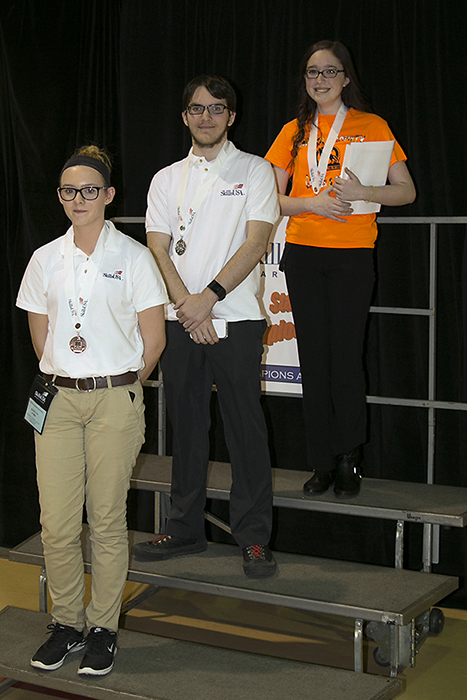 The National GC Competition is held over 3 days in June in Louisville, KY. At the national level students compete in all of the GC competition contests. The winner of the national competition is elegible to compete in the World Skills competition held every 2 years at a different location around the world.
The National GC Competition is held over 3 days in June in Louisville, KY. At the national level students compete in all of the GC competition contests. The winner of the national competition is elegible to compete in the World Skills competition held every 2 years at a different location around the world.
Maryland has won 3 straight gold medals at the National GC competition including 2 by Chandler Kerr from the Center of Applied Technology North and Brittany Whitestone from Carroll County Career and Tech. Who will be the next GC competition champion?
December 7, 2016
Balanced Approach Will Benefit Maryland Workers and Job Creators
ANNAPOLIS, MD – Governor Larry Hogan today announced plans to introduce legislation in the upcoming session of the Maryland General Assembly to provide common sense, balanced paid sick leave benefits that have the potential to cover nearly all working Marylanders without placing an unmanageable burden on job creators. During his remarks at a State House press conference, the governor reaffirmed his commitment to common sense policies that will make Maryland a more business-friendly state while ensuring a strong and healthy workforce.
“For the last few years, there has been a great deal of discussion and debate around the issue of paid sick leave in Maryland,” said Governor Hogan. “While all of us agree that more workers need sick leave in Maryland, it would be irresponsible to put a law on the books that unfairly penalizes our state’s job creators. It is clear that, in order to move forward, we must strike a balance between the needs of Maryland’s employees while not hurting our small businesses and continuing to foster a more business-friendly climate in our state.
“A strong majority of Marylanders want to see the state address this issue in a common sense way that benefits our workers while also protecting our small business job creators. We look forward to working with legislators on both sides of the aisle to reach an agreement on a balanced, fair, and common sense approach to paid sick leave.”
The Hogan administration’s proposal contains important provisions to protect Maryland’s small business community. Businesses with 50 or more employees will be required to offer paid sick leave totaling at least 40 hours per year, with the ability for employees to roll over a maximum of 40 hours each year. The proposal also calls for part-time employees to be covered after a minimum of 30 working hours. If a company already has a general leave policy that meets these minimum requirements, the state will not interfere. In addition, the state will honor existing collective bargaining agreements with unions. The 50-employee threshold matches current federal standards under the Family Medical Leave Act and the Affordable Care Act.
Maryland small business job creators with fewer than 50 employees that choose to offer paid sick leave will be eligible for tax relief incentives closely modeled after the top recommendation of the Augustine Commission, a bipartisan panel that identified strategies to improve Maryland’s business climate. These small business owners will be able to exempt the first $20,000 of their income from taxes. The legislation will also provide protection for seasonal industries by exempting workers employed for less than 120 days in a 12-month period.
Governor Hogan is committed to giving Maryland workers the support they need without interfering with the policies of small businesses or putting jobs at risk. The Hogan administration’s common sense proposal would institute a fair and flexible statewide policy that would apply to all 24 jurisdictions and supersede existing policies to ensure consistency and ease of compliance for job creators across the state.
|
|
WHAT HAPPENED?
A federal district court in Texas ruled yesterday that the new Fair Labor Standards Act overtime rules will not go into effect on December 1, 2016. The court issued a temporary injunction so it could further consider whether the overtime rules should be permanently blocked.
WHAT DOES THIS MEAN TO EMPLOYERS?
This means that employers are not required to make any changes to their current duties and salary structure to meet the December 1, 2016 effective date of the FLSA overtime rules. Recall that exempt status requires two things: Duties of the employee must meet one of the exceptions, and annual Earnings must meet a threshold of $47,476 or more. If your company has already made the changes to either the duties or the earnings of its employees, here are some options:
WHAT TO EXPECT GOING FORWARD?
A temporary injunction requires the court to believe that the challenge to the overtime rules has a substantial likelihood of success going forward – which is to say that the injunction may become permanent and the new overtime rules may never take effect.
In addition, the recent elections have resulted in Republican control of both houses of Congress and the Presidency. This is significant, because the new administration could decide to simply withdraw its defense to the Texas lawsuit, and the overtime rules would be defeated immediately.
It is possible, however, that the new administration will support some version of new overtime rules. While President-elect Trump has not spoken about yesterday’s court decision, he has indicated in the past that he is not wholly against the overtime rules, but that he might support an exception for small businesses, and a general delay to the implementation of the rule. Both the House of Representative and the Senate have legislation pending that were proposed by Republicans (who will control Congress for at least the next two years).
These bills, or something similar, may be the future of the overtime rules. Although the legislation differs slightly, if either of these bills were passed, it appears that the salary threshold for exempt positions would increase to approximately $36,000 in annual earnings, and the duties tests would remain the same. The threshold salary amount would be phased with incremental increases occurring over several years, reaching the $36,000 amount approximately three years after the rules went into effect.
HOW DO WE MONITOR THE SITUATION?
PGAMA along with Printing Industries of America, will closely watch what is happening with the FLSA overtime rules and when there is news, will keep members informed by notifying immediately. If you have any immediate questions, please contact This email address is being protected from spambots. You need JavaScript enabled to view it. at 410-319-0900
Unless lawsuits attempting to overturn the rule or OSHA delays it further, December 1, 2016 is the date for implementation of a rule that employers are not prohibited from drug testing employees who report work-related injuries or illnesses so long as they have an “objectively reasonable basis” for testing. In addition, the rule does not apply to drug testing employees for reasons other than injury reporting. The rule only prohibits drug-testing employees for reporting work-related injuries or illnesses without an “objectively reasonable basis”.
OSHA also said that post-incident drug testing that is consistent with the terms of a state’s Drug-Free Workplace or workers’ compensation statutes, or federal law (such as U.S. Department of Transportation regulations) is not impacted by the rule and is allowed. Testing will be permissible even in the absence of such a state or federal law if an employer’s private insurance carrier offers discounted rates if the employer implements a post-incident drug testing policy. OSHA has also confirmed that random, pre-employment, and reasonable suspicion testing are not covered by the rule.
For post-accident drug and alcohol testing that will be conducted outside of one of the programs that is not covered by the rule, the key is having an “objectively reasonable basis”. OSHA’s focus to determine an “objectively reasonable basis” will be whether the employer had a reasonable basis for believing that drug use by the reporting employee could have contributed to the injury or illness. It will consider factors including whether the employer had a reasonable basis for concluding that drug use could have contributed to the injury or illness (and therefore the result of the drug test could provide insight into why the injury or illness occurred), whether other employees involved in the incident that caused the injury or illness were also tested or whether the employer only tested the employee who reported the injury or illness, and whether the employer has a heightened interest in determining if drug use could have contributed to the injury or illness due the hazardousness of the work being performed when the injury or illness occurred.
For example - A crane accident injures several employees working nearby but not the operator. The employer does not know the cause of the accident, but there is a reasonable possibility that it could have been caused by operator error or by mistakes made by other employees responsible for ensuring that the crane was in safe working condition. In this scenario, it would be reasonable to require all employees whose conduct could have contributed to the accident to take a drug test, whether or not they reported an injury or illness. Testing would be appropriate in these circumstances because there is a reasonable possibility that the results of drug testing could provide the employer insight on the root causes of the incident. However, if the employer only tested the injured employees but did not test the operator and other employees whose conduct could have contributed to the incident, the testing of reporting employees would be seen as a violation.
OSHA also stated that drug testing an employee whose injury could not possibly have been caused by drug use would likely violate the retaliation provision of the rule. For example, drug testing an employee for reporting a repetitive strain injury would likely not be objectively reasonable because drug use could not have contributed to the injury.
In the final rule, OSHA indicated that only drug tests that can indicate impairment at the time of the injury or illness would be permissible. The only test capable of such a determination is an alcohol test. OSHA now says it “will only consider whether the drug test is capable of measuring impairment at the time the injury or illness occurred where such a test is available.” OSHA will consider this factor for tests that measure alcohol use, but not for tests that measure the use of any other drugs. This means that drug testing is allowed even if levels of impairment have not yet been established.
The guidance can be found at https://www.osha.gov/recordkeeping/finalrule/interp_recordkeeping_101816.html
This is the first in a series of guidance documents issued under the Occupational Safety and Health Administration’s (OSHA’s) Temporary Worker Initiative (TWI). This Initiative focuses on compliance with safety and health requirements when temporary workers are employed under the joint (or dual) employment of a staffing agency and a host employer.
When a staffing agency supplies temporary workers to a business, typically, the staffing agency and the staffing firm client (also known as the host employer) are joint employers of those workers. Both employers are responsible to some degree for determining the conditions of employment and for complying with the law. In this joint employment structure, questions regarding which employer is responsible for particular safety and health protections are common. This bulletin addresses how to identify who is responsible for recording work-related injuries and illnesses of temporary workers on the OSHA 300 log.
Injuries and illnesses should be recorded on only one employer’s injury and illness log (29 CFR 1904.31(b)(4)). In most cases, the host employer is the one responsible for recording the injuries and illnesses of temporary workers.
Injury and illness recordkeeping responsibility is determined by supervision. Employers must record the injuries and illnesses of temporary workers if they supervise such workers on a day-to-day basis (29 CFR 1904.31(a)). Day-to-day supervision occurs when “in addition to specifying the output, product or result to be accomplished by the person’s work, the employer supervises the details, means, methods and processes by which the work is to be accomplished.” See OSHA FAQ 31-1 at www.osha.gov/recordkeeping. (Essentially, an employer is performing day-to-day supervision when that employer controls conditions presenting potential hazards and directs the worker’s activities around, and exposure to, those hazards.) In most cases, the host employer provides this supervision.
While the staffing agency may have a representative at the host employer’s worksite, the presence of that representative does not necessarily transfer recordkeeping responsibilities to the staffing agency. As long as the host employer maintains day-to-day supervision over the worker, the host employer is responsible for recording injuries and illnesses.
Read the full article here: Osha Temporary Worker And Recordkeeping Nov 2016
|
|
If your company is impacted by the changes in the Fair Labor Standards Act (FLSA) Overtime rules and you are now confused due to the election results, the PIA HR Listserve Networking Groups has been atwitter since the results of the Presidential Election this past Tuesday and we would like to share the comments with you.
President-Elect Trump has made many references to reexamining and possibly eliminating many onerous rules and regulations and this has given some of our members hope that the December 1st implementation date for the new rules will be delayed or rescinded.
Some of our member companies have voiced the opinion that they should delay or even overturn decisions that they have already implemented. However, the prevailing opinion of the many HR managers throughout the country who commented on the topic, as well as the VP of HR for PIA, Adriane Harrison, is that you should apply any required changes by the December 1 deadline. President-Elect Trump does not take office until January 20th and even if he is inclined to make changes in the FLSA Overtime rule there is no indication at this point that he will make it his first or even one of the top priority of his administration.
The HR Listserve Networking Group is available to all members and is a valuable benefit of PGAMA membership. The subjects that are initiated, and the opinions rendered, vary and are offered from print colleagues from all over the country. To join the HR listserv and see what other listservs are available see: http://www.printing.org/listservs
If you have any questions and would like to discuss this or any other matter, please contact This email address is being protected from spambots. You need JavaScript enabled to view it. or call, 410-319-0900 or Toll Free 1-877-319-0906
PGAMA is always on the lookout for new and improved member benefits to offer. Sometimes however there are a suite of benefits that are already available to our members but are not as aggressively promoted as some and that is the case with our “financial insurance” package of Slow Pay, PGAMA Credit Check and PICB Collections Service. Each, in their own right, are powerful tools to help your business but taken as a package they create a best practices process and could make a major difference to your cash flow and bottom line.
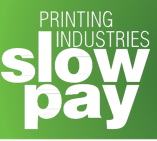 Slow Pay is a repository of member reports on clients that have not paid their invoices. Once you enroll, you should regularly monitor the site and make sure that a new customer has not been reported as a late pay. This service is free to PGAMA members and could be considered your first line of defense in deciding if and how to do business with a new client or perhaps a client that is returning after an absence of some time. If you are unfortunate enough to have a slow pay client, this is where you would report it. Contact Esther Slansky at PGAMA office or email her at This email address is being protected from spambots. You need JavaScript enabled to view it. and she will enroll you in the program and explain how it works.
Slow Pay is a repository of member reports on clients that have not paid their invoices. Once you enroll, you should regularly monitor the site and make sure that a new customer has not been reported as a late pay. This service is free to PGAMA members and could be considered your first line of defense in deciding if and how to do business with a new client or perhaps a client that is returning after an absence of some time. If you are unfortunate enough to have a slow pay client, this is where you would report it. Contact Esther Slansky at PGAMA office or email her at This email address is being protected from spambots. You need JavaScript enabled to view it. and she will enroll you in the program and explain how it works.
PGAMA Credit Check At PGAMA we give you choices when it comes to credit checks. Our in-house credit check service is free to members and easy to access. Just contact Debbie Woolbright This email address is being protected from spambots. You need JavaScript enabled to view it. or call the PGAMA office and she will send you a form to fill out. Once you return it, we spring into action checking the information that you obtained from your customer. Based on the information you learn from our credit check, you can make an informed decision about how you will handle the financial arrangements with your new customer. If you want more, PGAMA has a partnership with Experian, a major international credit bureau. This service has a cost associated with it, but all PGAMA members receive a discounted fee. The major difference is that Experian provides you with a credit score and has a deeper reach than a normal credit check. The choice is yours!
 PICB – a Check-IT Company If in spite of taking all the precautions available, you make the decision to turn an account over for collection, PGAMA has partnered with PICB, a firm with a long history of involvement in the printing industry. While PICB also offers credit check services, their uniqueness in our package for PGAMA members is the collection services.
PICB – a Check-IT Company If in spite of taking all the precautions available, you make the decision to turn an account over for collection, PGAMA has partnered with PICB, a firm with a long history of involvement in the printing industry. While PICB also offers credit check services, their uniqueness in our package for PGAMA members is the collection services.
To learn more contact Jay at This email address is being protected from spambots. You need JavaScript enabled to view it. or you may wish to contact Andrea Schlack directly at PICB. She can be reached at 847-265-0400 or at This email address is being protected from spambots. You need JavaScript enabled to view it.
PGAMA members working together and using best business practices can make for a stronger industry and enhanced bottom line for all. Please don’t hesitate to contact any of us at PGAMA for further information.
For members of our industry, the DRUPA International Trade Fair in Düsseldorf, Germany can be described as a professional pilgrimage. The expo, which occurs every 4 years, is the “World’s Fair” of Graphic Communications Technology.
DRUPA 2016 consisted of 19 exhibition halls, had 1,828 exhibitors and logged over 260,000 visitors from 183 countries. The industry equipment on display represented both the latest consumer-ready products as well as manufacturer prototyped technology.
The weather in Germany is generally beautiful at this time of year and it doesn’t hurt that you can grab a beer and a brat and take in some sun in the open courtyard between exhibit halls. However, given the time and treasure required, that alone is not reason enough to attend.
So then why attend? As so often is the case in business, management is hunkered down in the day-to-day and as the idiom goes, “can’t see the forest for the trees.” The DRUPA Expo provides those print executives tasked with planning for the future, an opportunity to step out of the trees and gain perspective. At no other place and time is there such a gathering of industry peers, speakers, consultants, engineers, and manufacturers. Given the international flavor of this event, attendees from North America are also exposed to a broader take on our industry and its trends.
From my perspective as an equipment supplier, I attended in the hopes of getting a better understanding of where manufacturers are investing their R&D money and what was the overall theme of their exhibits. Here’s a quick overview of what I came away with:
Print Output Devices: While their current iterations were on display, both traditional and digital printing equipment manufacturers alike had their commercial grade inkjet print platforms featured front and center in their exhibits. Unlike currently available models, most of these second or third generation prototypes target higher quality, larger format and higher volume print segments that have traditionally been dominated by offset technology. These machines were impressive and great strides have been made in this technology since DRUPA 2012. It was evident, however, that we’re still in the pioneering phase of inkjet print technology as it relates to the general commercial and packaging segments of the market.
Binding & Finishing Machinery: As you’d expect, these manufacturers are also scrambling to keep up with developments in low and high volume digital print output. At DRUPA, most exhibits featured machinery design that focused on a very high level of automation and ease of operation. Whether it was cutting, folding, stitching, binding, die-cutting or foil-stamping, the theme was reducing the touchpoints and associated labor in the manufacturing process. Many brand new finishing platforms have been developed to replace antiquated machinery or to address processing needs not previously in existence. The varied array of these solutions was very impressive.
Perhaps the most important takeaway I had was the fact that while evolving quickly, the Graphic Communications industry is still very much a vibrant, exciting industry. New technologies were abound including expanded offerings in laser finishing, grand-format, and 3D printing. I gained a much better understanding of what is viable present-day technology and what the ultra-smart, thinkers of our industry envision in the not so distant future.
In the past year, the Wage and Benefits Survey and the quarterly Printing Industry Performance and Insight (PIPI) have been published. Participants in the studies receive the final result for FREE. If a member does not participate you will still enjoy a significant discount for the final report over the non-member price.
Additionally, from time to time, PGAMA issues our own publications under the Tool Kit Series title. Recently, The Sales and Use Tax Guide and The Air Pollution Control Guide are available upon request.
Both are FREE to members and are available by emailing This email address is being protected from spambots. You need JavaScript enabled to view it. or calling 410-319-0900 or 877-319-0906
 Bette Brotman Dolan, President
Bette Brotman Dolan, PresidentHi All. Thought I would share my experience with a vendor-member of PGAMA. My old phone system needed replacing - a task I was not looking forward to. The old one was 26 years old, we were used to it, it served our purposes and a 100 more excuses NOT to be pro-active about the replacement. Well, a good thunderstorm pushed my pro-activeness (if there is such a word) into high gear. Coincidentally, they called me referencing PGAMA and I made an appointment. A breeze - that is the only way I can describe the entire process--- saved me money, new amazing phones, great installation staff, on and on. THEN, today, my first bill arrived. So the good service, the good product and now I get the bill....A LITTLE LESS THAN THEY HAD QUOTED. Seriously, wake me up, because I MUST be dreaming! HIghly recommend Global Telecom.
A preview of exclusive discounts for members only.
To join PGAMA and gain access to these benefits please contact us at (877) 319-0906.
To enable our membership to become better stewards of the environment by collecting and disseminating information on the best sustainable, environmental industry practices available.
Cocktails & Connections09 May 202405:00PM - 07:30PM |
Offices Closed24 May 202412:00AM |
Offices Closed27 May 202412:00AM |
Maryland Golf13 Jun 202408:00AM - |
Offices Closed19 Jun 202412:00AM |
Offices Closed04 Jul 202412:00AM |
Offices Closed05 Jul 202412:00AM |